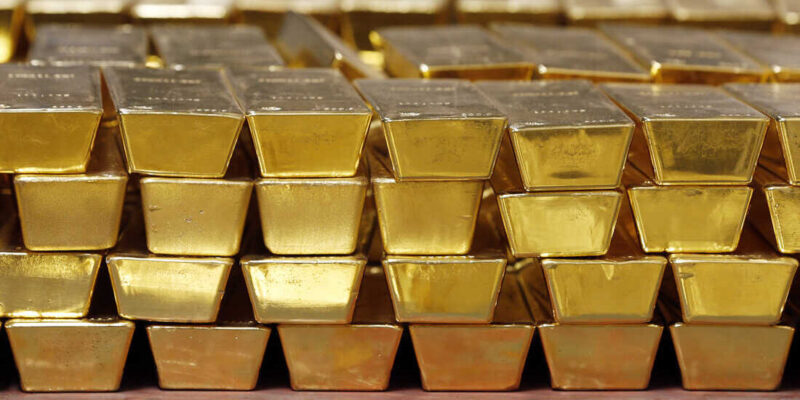Gold’s status as a safe-haven asset wanes due to rising interest rates and an increased appetite for riskier investments.
Despite holding above the $1,900 mark since March, continued healthy employment and declining inflation in the US have shifted market perspectives.
Analysts highlight challenges for gold, including the continuous selling of exchange-traded funds, with net outflows marking their lowest level since April 2020.
Gold Prices
The price of gold has weakened in the face of a strong US dollar, with investor sentiment shifting away from the precious metal as hopes of avoiding a recession rise.
It has started trading this week at $1,910 per ounce, falling by $30 per ounce in one week. It neared $2,000 per ounce last month.
The prospect of interest rates rising again in September, combined with more appeal for riskier investment strategies, means that gold’s appeal as a safe-haven asset has diminished.
Fragile investor confidence has enabled gold to hold above the $1,900 threshold since March earlier this year, but economic data in the US – the world’s largest economy – shows employment remaining healthy and inflation tracking downward.
There are now revived expectations that a global recession can be avoided amid hawkish responses from central banks to tame inflation – as reflected in easing prices.
Rupert Rowling, a market analyst for Kinesis Money, said: “In this environment of high-interest rates and market confidence slowly flowing back to encourage a riskier approach among traders and investors, it is hard to see gold making any gains, and instead, the controlled slide downward looks set to continue.”
Commenting on future price moves, he argued it would be “interesting” to note investor reactions if prices drop below $1,900 per ounce.
“Given the underlying institutional support for the asset, this relative cheapness could prompt a fresh wave of buying from Asian buyers, in particular, and slow gold’s decline. If, however, there is a limited reaction, it would show that gold has fallen out of favor, and the price will continue dropping,” he said.
Carsten Fritsch, a commodity analyst at Commerzbank, also noted that gold is also facing another challenge from the continued selling of exchange-traded funds.
Citing data from Bloomberg, he noted that net outflows were recently registered on 13 consecutive days, amounting to 37 tons during this period – with holdings decreasing to their lowest level since April 2020.
He said: “In other words, all the inflows since then – i.e., during the course of the coronavirus pandemic and following the outbreak of the Ukraine war – have been reversed again in the meantime. For the outflows to stop, the market’s remaining rate hike expectations need to disappear and give way to rate cut expectations. We expect this to happen in the fourth quarter.”
![]()




